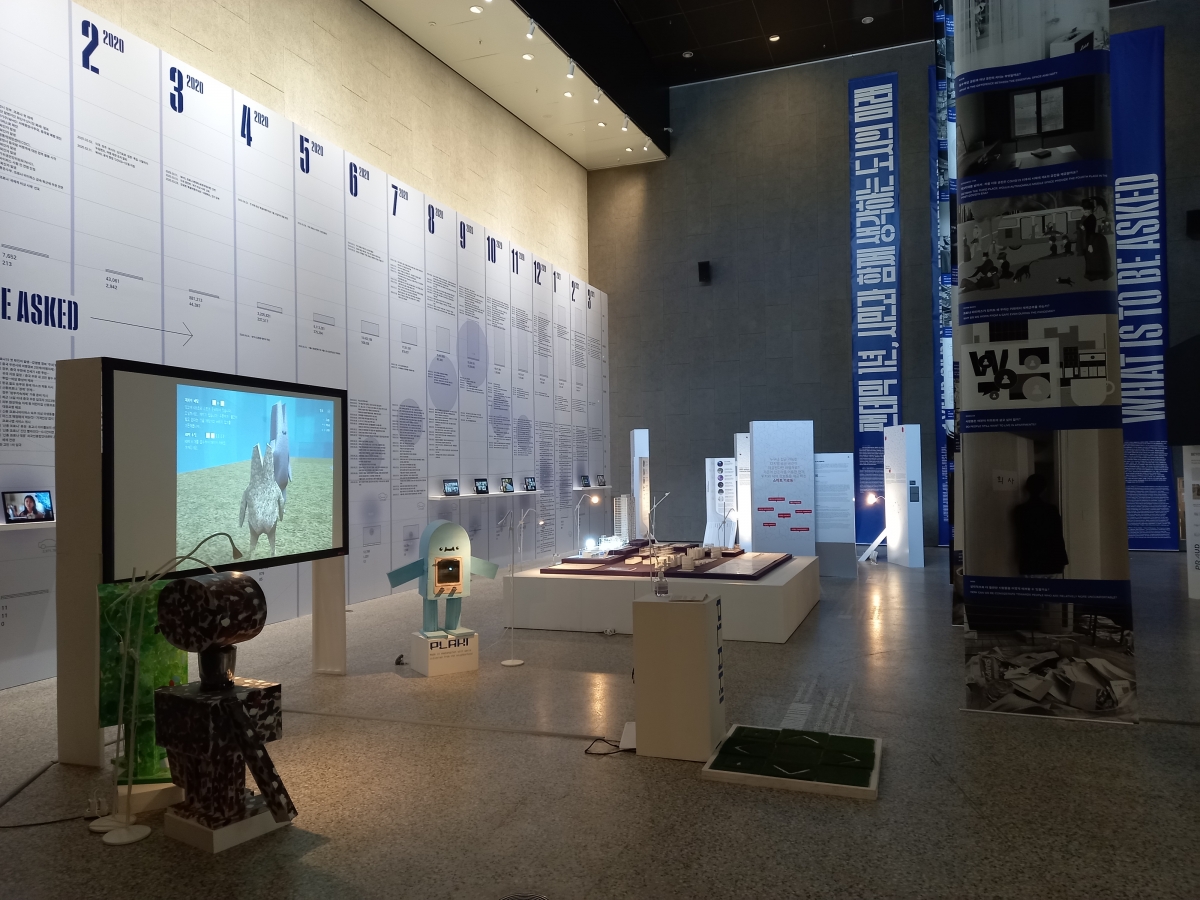What ‘question’ should be posed by those in architecture and city planning to find a way out of the many crisises that face us all under this pandemic? Under the theme ‘What is To be Asked’, the Seoul Hall of Urbanism & Architecture organised an international design competition (hereafter WTA) to take place over six months from August 2020. This event, which picked five teams through its ‘Key Concepts Submission’ and supported the ensuing ‘Key Concepts Proposal’, was conducted in an online format according to its intentions to provide an open public discussion platform for citizens and professionals alike to come together to search for a solution. The exhibition ‘One Year of the Pandemic and The Future of Cities Thinking Together with its Citizens’ was held at the Bium Hall of Seoul Hall of Urbanism & Architecture from Mar. 16 to Apr. 25 is an exhibition that shares the processes behind and results of the WTA.
While on the one hand exhibiting the changes brought about by the pandemic via a timeline, video content, and imagery, the exhibition also prepared an archival room that collected pandemic-related materials regarding local and international research and policies through which draw an audience to observe the issues over a wider horizon. The works of the five awardees from the competition were also revealed: work by ‘D.Fluence’ that proposes the ‘value of experience’ as a form of speculative future; work by ‘M&K’ that proposes an urban architectural prototype that caters to the socially-marginalised and those that have been isolated during the pandemic; work by ‘Urban Flow’ that scrutinises the flow of information and resources in a city via its Plaki project that reuses the waste produced in a town; work by ‘Gongwon Mundap’ that explores the potential of an urban park as a foothold for daily life and quarantine; and work by ‘FRAUD’ that proposes a new spatial concept known as a ‘a movable room’ based on automatic driving. But the reason for a ‘common platform’ in an exhibition organised through various teams and origins like this remains to be found. The apparent lack of vibrant discussion on these hard-earned ‘valuable questions’ leaves one a little disappointed.

ⓒ Bang Yukyung




